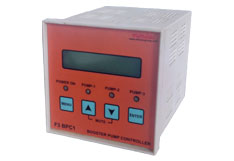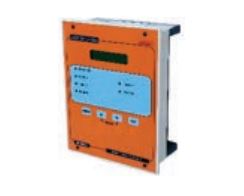Automation Products
Minilec offers variety of controllers for plant/process automation and data logging PLCs with dedicated software, and with communication features, these are easily adaptable to varying customer needs.
FEATURES
- Digital / Analogue inputs
- Digital outputs
- RS232 / RS485 Serial communication link
- MODBUS ASCII / RTU protocol
- PC side software
FUNCTIONS
- Continuous monitoring of input parameters
- Control of process through outputs and software
- Data acquisition & communication
- Data Storage & records through PC
ORDERING INSTRUCTIONS
- Product Family Name
- Model Name
- Aux. Supply / Control supply voltage
- Input Output Details
- Process / application details
Download
FAQs
Digital Input (DI): Receives a simple on/off signal from devices like push buttons, switches, or level sensors.
Analog Input (AI): Receives a variable signal (e.g., 4-20 mA, 0-10V) from devices like temperature sensors, pressure transducers, or flow meters.
Digital Output (DO): Sends an on/off signal to control devices like motor contactors, solenoid valves, or indicator lamps.
Analog Output (AO): Sends a variable signal to control devices like variable frequency drives (VFDs) or proportional valves.
Communication protocols like MODBUS ASCII/RTU over RS232/RS485 allow the PLC to talk to other devices. This enables:
Integration: Connecting to HMIs (Human Machine Interfaces), SCADA systems, and other PLCs.
Centralized Monitoring: Sending process data to a central control room computer.
Data Logging: Recording process parameters and alarms for analysis and record-keeping.
The dedicated software is used to:
Program: Write the logic (e.g., ladder logic, function block diagrams) that defines how the controller operates.
Configure: Set up communication parameters and I/O points.
Monitor: Watch the program execute in real-time for troubleshooting.
Data Log: Retrieve stored data from the controller.
Continuous Monitoring: Scanning input devices thousands of times per second.
Process Control: Executing control logic to operate outputs automatically.
Data Acquisition: Gathering information from the process.
Communication: Sharing data with higher-level systems.
Data Storage: Logging events and values for historical tracking.
Selecting the right system requires defining your needs:
I/O Count: The number and type (Digital/Analog) of inputs and outputs needed.
Control Supply Voltage: The voltage required to power the controller’s internal circuitry (e.g., 24V DC, 120V AC).
Process Details: The specific application (e.g., conveyor control, batching system, temperature loop) to ensure the controller has the right features and processing speed.
Communication: Whether you need to connect to other systems and which protocol is required.




